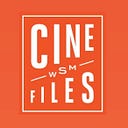Written by Madeline Mecca, Ithaca College
“Perhaps there’ll be an occasion, maybe a summer night sometime, when he’ll look up from what he’s doing and listen to the distant music of a calliope and hear the voices and the laughter of the people and the places of his past. And perhaps across his mind there’ll flit a little errant wish, that a man might not have to become old, never outgrow the parks and the merry-go-rounds of his youth. And he’ll smile then too, because he’ll know it is just an errant wish, some wisp of memory not too important really, some laughing ghosts that cross a man’s mind, that are a part of the Twilight Zone.”
— Rod Serling, “Walking Distance”
Located southwest of the Finger Lakes region is Binghamton, New York, once composed of nothing but untamed wilderness, then a bustle of railroads and manufacturers, and now a town of college students and their poverty-stricken neighbors.
Binghamton served as a hotspot of inspiration for Rod Serling, creator of The Twilight Zone. Serling was born in Syracuse, New York, in 1924 and moved to Binghamton, New York, with his family in 1926. He lived here until his enlistment in the military in 1943, eventually being stationed in the Philippines. Serling was discharged in 1946 and married his wife, Carol, in 1948. The couple spent their honeymoon in a family member’s Cayuga Lake house and continued to use it as a vacation spot throughout the rest of his life. Later in life, he taught at Ithaca College from 1967 through 1975.
Serling’s legacy lives on in Binghamton, not just in the numerous plaques or walking tours, but in surviving buildings and inspirations. In the most overtly Binghamton-centric episodes of The Twilight Zone, our town is mentioned by name and/or depicts distinct landmarks. “Walking Distance” sees a man return to his hometown, eternally stuck in time, as he relives the carousel and bandstand of his childhood, inspired by Serling’s time spent in Rec Park; “After Hours” captures a woman witnessing mannequins come to life in a department store inspired by our local Boscov’s, then named Fowler’s; “Mirror Image” is a near-picture-perfect mid-century depiction of our Greyhound bus station, as a woman is tormented by her doppelganger, and a friendly passenger introduces himself to her, noting that he is traveling from Binghamton. Many other episodes show the telltale Victorian era homes on treelined streets incredibly like those of the west side of Binghamton, as noted on Atlas Obscura.
Every star-spangled childhood summer saw my siblings, cousins, and me at Rec Park, pretending to be in an episode of the show. The space between trunks of towering trees was a portal to a black and white era. The plaster horses that have spun in circles for decades were our getaway vehicle to getting lost in time. Our grandparents’ house, a few minutes away on Spring Street, was the teleportation machine that would take us to a land of Coupe de Villes and kitten heels. On rainy days following our mothers through Boscov’s, we swore up and down that we saw the slightest blur of movement from a mannequin’s leg. Going down this wormhole of memories is almost like entering The Twilight Zone itself. It’s a realm where I feel slightly untethered, sifting through mind images of locations whose charms lie in their timelessness. Being in Boscov’s or Rec Park, you can just imagine the throngs of figures from Serling’s prime — housewives eyeing the clerk who seems to have never aged a day, children on summer vacation racing to the pool in search of underwater worlds, mannequins on the third floor who may or may not have just adjusted their facial expressions when they thought you weren’t looking.
Much of Binghamton and our surrounding areas have changed and adapted, but even so, time often seems to stand still here, stopped right in its tracks. When it’s a lazy afternoon and the sun hits everything just right, you’re transported right into The Twilight Zone.
